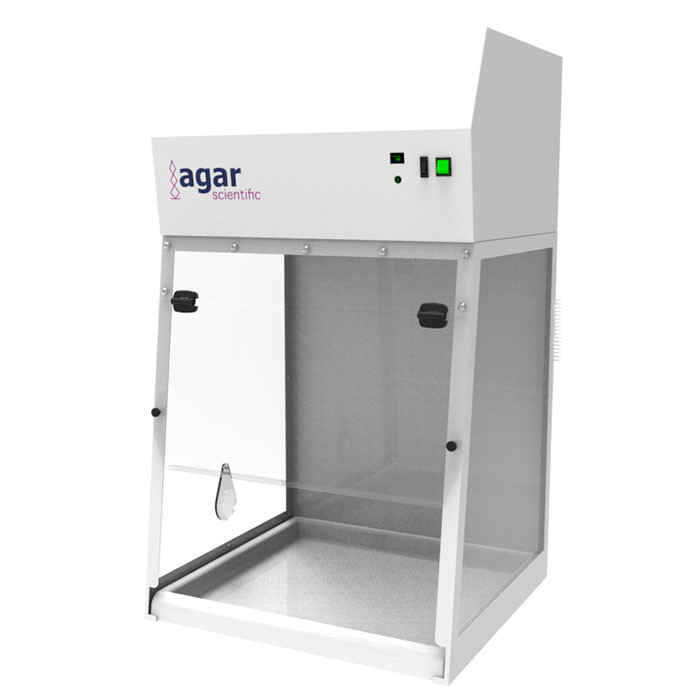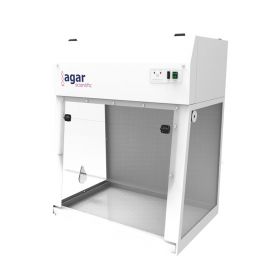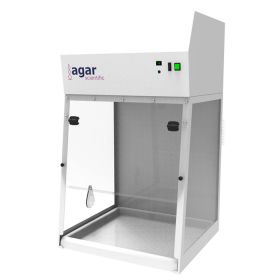
Are Non-Ducted Fume Cabinets safe?
Non-Ducted Fume Cabinets are as safe as Ducted Fume Cabinets when matched to the appropriate application. Non-Ducted Fume Cabinets are a good choice for laboratories to avoid costly HVAC upgrades and still be able to manage a variety of filtration requirements.
How versatile are Non-Ducted Fume Cabinets?
As requirements and applications change over time, Non-Ducted Fume Cabinets can be adapted to fit new air filtration needs. Filters in are interchangeable and can be customised to protect against a wide variety of chemicals.
Do Non-Ducted Fume Cabinets maintain consistent face velocity?
Non-Ducted Fume Cabinets have high capacity air handling systems to deliver 100 fpm (feet per minute) face velocity. This velocity is sufficient to contain chemical fumes and particulates. Advanced monitoring technology also ensures that this face velocity is maintained consistently, if velocity decrease an audible alarm sounds to warn technicians.
Will a Non-Ducted Fume Cabinet work in my laboratory?
There are certain factors to take into consideration, such as the chemicals you are filtering, how much of each chemical, and whether the environment is caustic or corrosive. Non-Ducted Fume Cabinets are designed for easy installation and can be moved around the laboratory as needed.
How do I monitor my carbon filters?
Each Non-Ducted Fume Cabinets is equipped with a filter saturation alarm that alerts you when the filter needs to be changed, ensuring complete safety for your technicians and equipment.
Are there safety features in the Non-Ducted Fume Cabinets?
Non-Ducted Fume Cabinets can include optional safety filter to offer increased protection across the range of chemicals used in an application. A pre-filter is standard and is coupled with either a customized carbon filter or HEPA / ULPA filtration.
Are Non-Ducted Fume Cabinets as technologically advanced as other types of fume cabinets?
Non-Ducted Fume Cabinets have a variety of built-in alarms to monitor airflow and filter saturation. Manual speed controllers manage fan speed and a variety of control options can be operated independently or tied into a larger, remote controlled monitoring systems.
What type of filtration is available in a Non-Ducted Fume Cabinets?
Carbon filters that protect against a variety of chemicals are available, as are HEPA and ULPA filters.
How quiet are Non-Ducted Fume Cabinets?
Most Non-Ducted Fume Cabinets have a noise level of less than 55dba at one meter. Some units are even quieter, depending on the fan used and the required airflow inside the hood.
Are Non-Ducted Fume Cabinets economical?
Non-Ducted Fume Cabinets not only save money on extensive HVAC and laboratory utility upgrades for installation, but also cut costs over time by operating more efficiently than other laboratory hoods. Efficient fan motors, low maintenance designs, and complete monitoring systems mean that Non-Ducted Fume Cupboards can cut utility costs and provide a low-cost solution for filtration in a variety of laboratories.
Which industries currently use Non-Ducted Fume Cabinets?
Non-Ducted Fume Cabinets are installed around the world in a variety of industrial and laboratory applications. Non-Ducted Fume Cabinets can be used in the life sciences, pharmaceutical manufacturing, forensics and evidence collection, industrial research, education and environmental sciences.
Can I use Non-Ducted Fume Cabinets and Ducted Fame Cabinets in the same facility?
In most laboratories, a combination of Ducted Fume Cabinets and Non-Ducted Fume Cabinets is an effective way to ensure complete filtration for all chemical applications. Non-Ducted Fume Cabinets can be incorporated to help expand the capabilities of an existing lab, while avoiding additional construction costs and ongoing HVAC and utility expenses. Non-Ducted Fume Cabinets can also be on casters to allow the unit to be moved around within a facility, providing ultimate flexibility of placement.
Do Non-Ducted Fume Cabinets run continuously?
They do not have to run continuously, but can if that is what your application requires. If continuous operation is not required, power switch controls turn off the fan and other monitoring systems. This can help cut utility costs and save on equipment wear and tear.
How do Non-Ducted Fume Cabinets affect future facilities planning?
Non-Ducted Fume Cabinets are invaluable in future facilities planning. If you only have a short-term research contract, are a start-up operation, or are located in a building with no existing HVAC system or where one would be difficult to install, Non-Ducted Fume Cabinets can allow you to get to work immediately. Once installed, you can have complete confidence that your investment will be 100% portable and re-usable.
Filter Guide
| Filter | Suitable for the removal of |
| Solvents | General organic compounds (iodine, solvents, odours, etc.) |
| Mineral Acid | Acidic compounds (and general organics) |
| Alkali | Alkali compounds (and general organics) |
| Ammonia | Ammonia & amine compounds (and general organics) |
| Cyanide | Cyanide compounds |
| Diethyl Ether | Ether compounds |
| Aldehydes | Aldehydes (and general organics) |
| Sulphurs | Sulphur compounds (and general organics) |
| Custom | Special blend of up to 4 of the above carbon types |
| Educational | Tri-layered filter for schools (organic, acid & alkali removed) |




